About Quality-time#
Quality-time is an automated quality system for software development and maintenance. Quality-time collects measurement data from sources such as GitLab, SonarQube, Jira, Azure DevOps, and OWASP Dependency Check, to provide an overview of the quality of software products, processes, and projects. It does so by comparing measurement data with metric targets and informing development teams about the metrics that need improvement actions.
Technically, Quality-time consists of a React frontend, a Mongo database server, and a number of backend components written in Python: a worker component to collect measurement data from the sources, a worker component to send notifications, an API-server for the frontend, and an API-server for the worker components.
Users can add and configure reports, metrics, and sources (such as SonarQube and Jira) in the frontend. The collector collects metrics data from the configured metric sources. It posts the measurements to the server which in turn stores them in the database. The frontend calls the server to get the reports and the measurements and presents them to the user.
Quality-time is developed by ICTU, an independent consultancy and project organisation within the Dutch government, helping government organizations develop and implement digital services.
Screenshots#
Some screenshots to wet your appetite.
Tip
Quality-time supports both a light and a dark UI mode. Toggle the UI mode of the documentation, using the icon at the top of the page, to also toggle the UI mode of the screenshots.
Projects dashboard#
Quality-time shows a summary of the projects on its landing page:
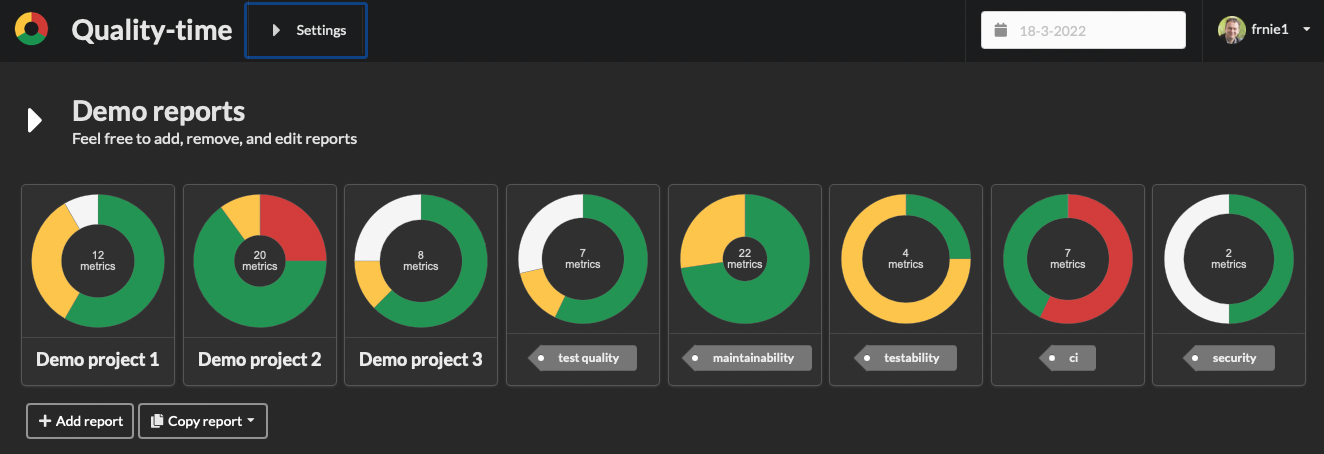
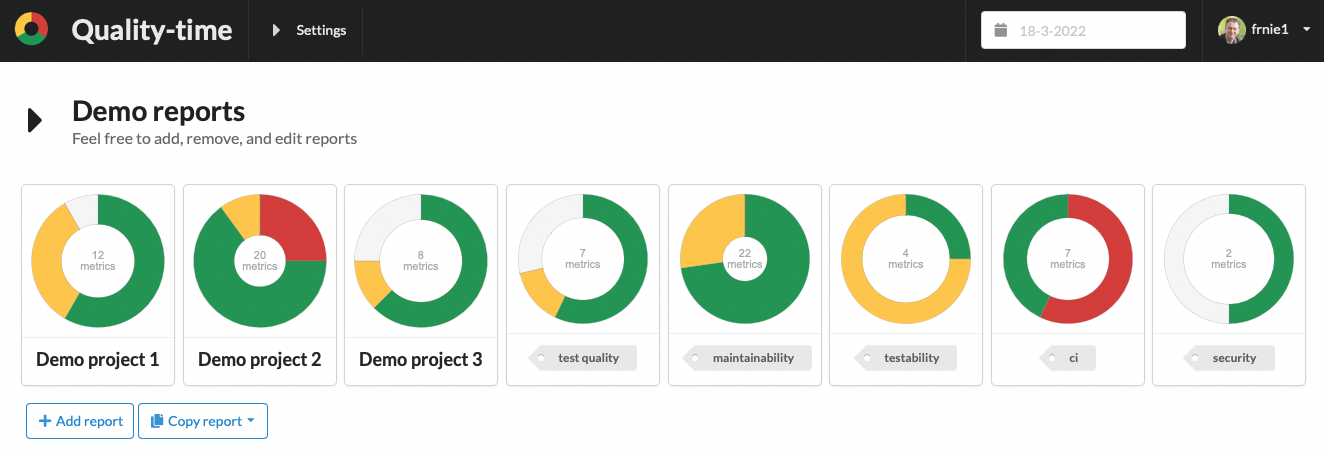
Metrics overview#
For each metric, Quality-time displays the key data:

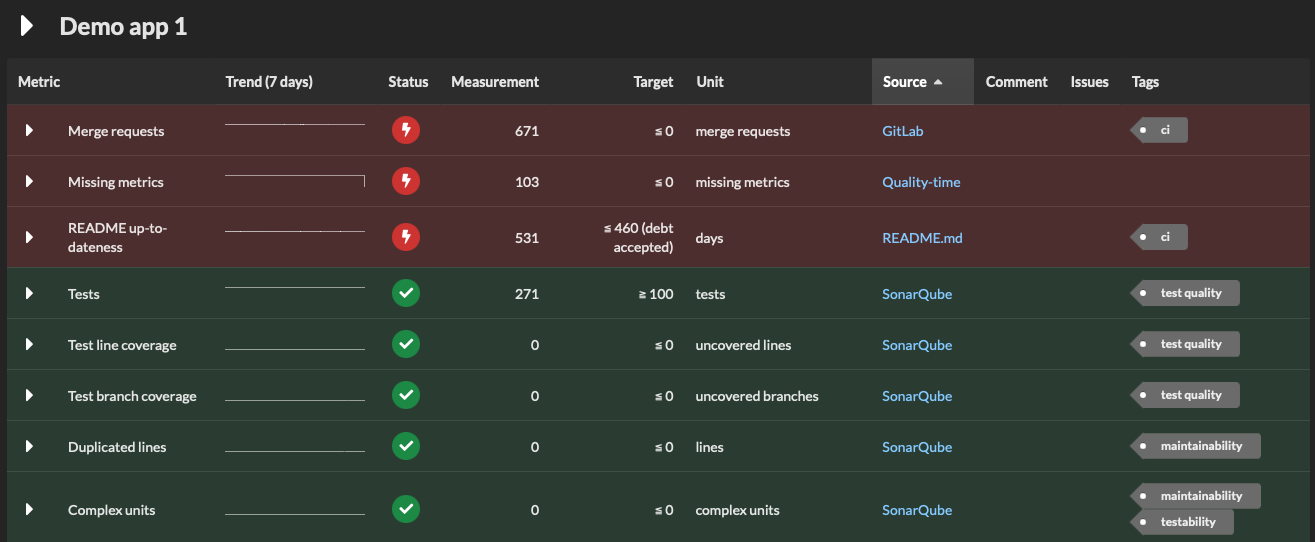
Metric details#
Users can expand the metrics to see and configure the metric details:
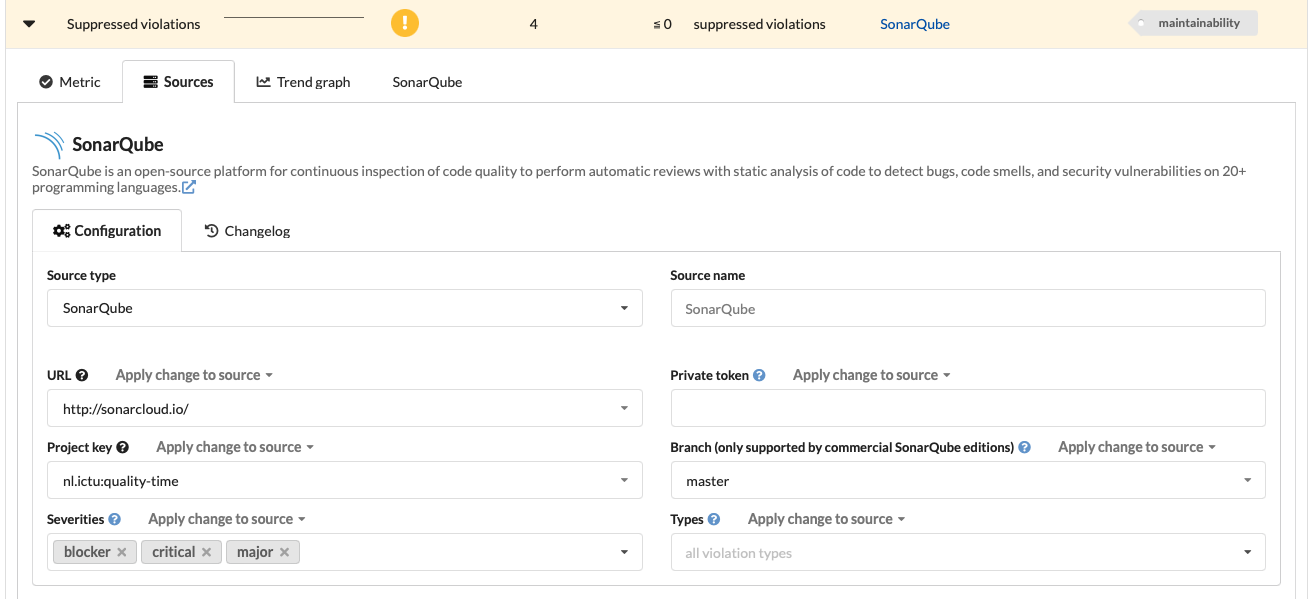
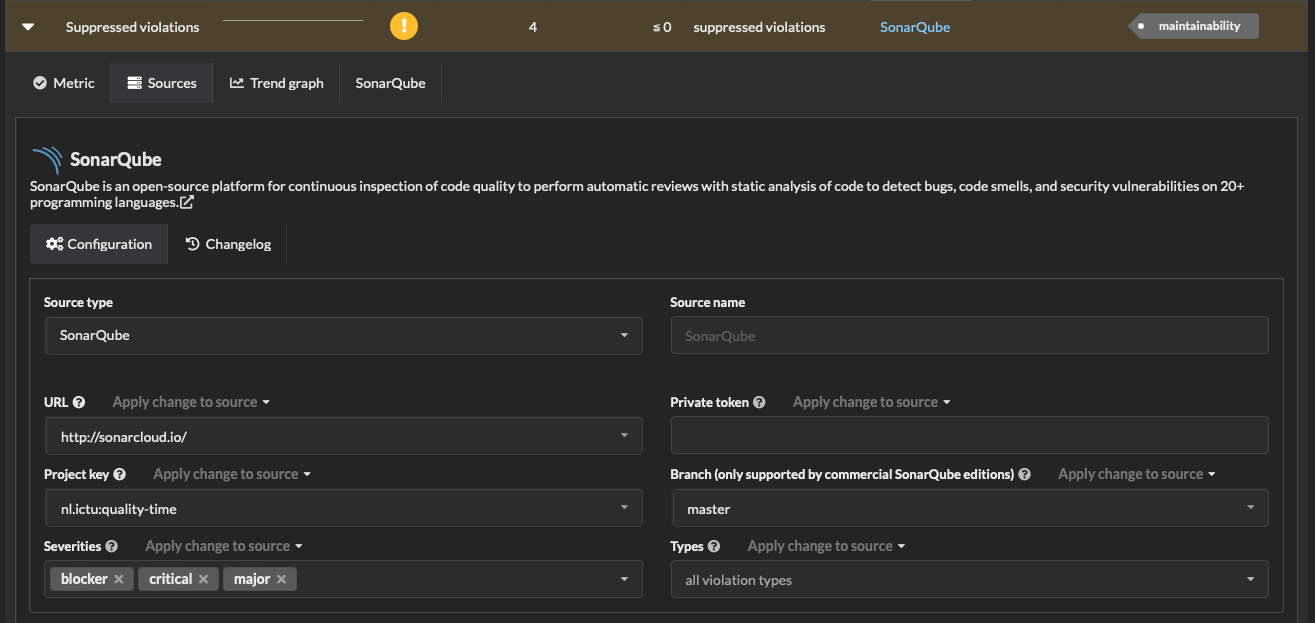
Keep track of trends:
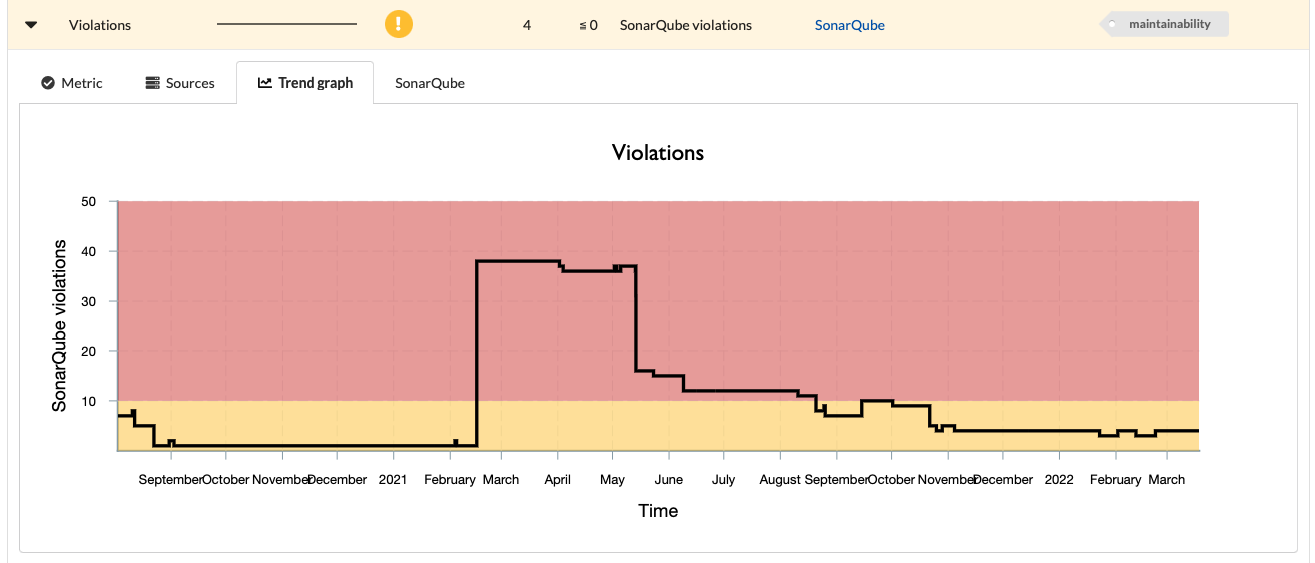
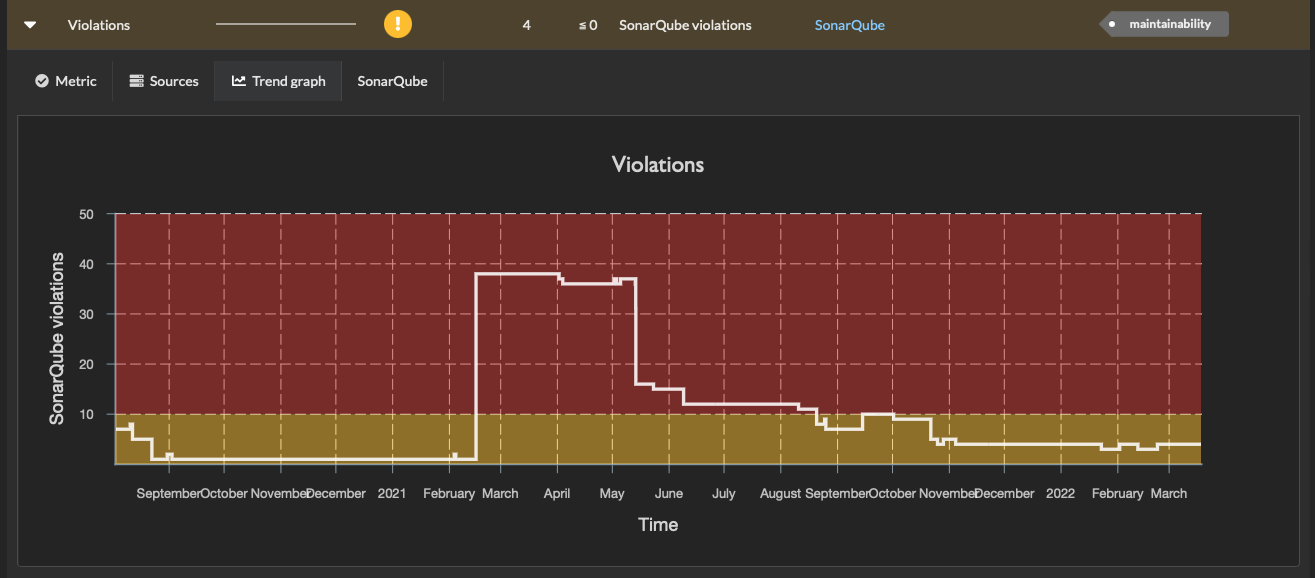
And manage false positives:
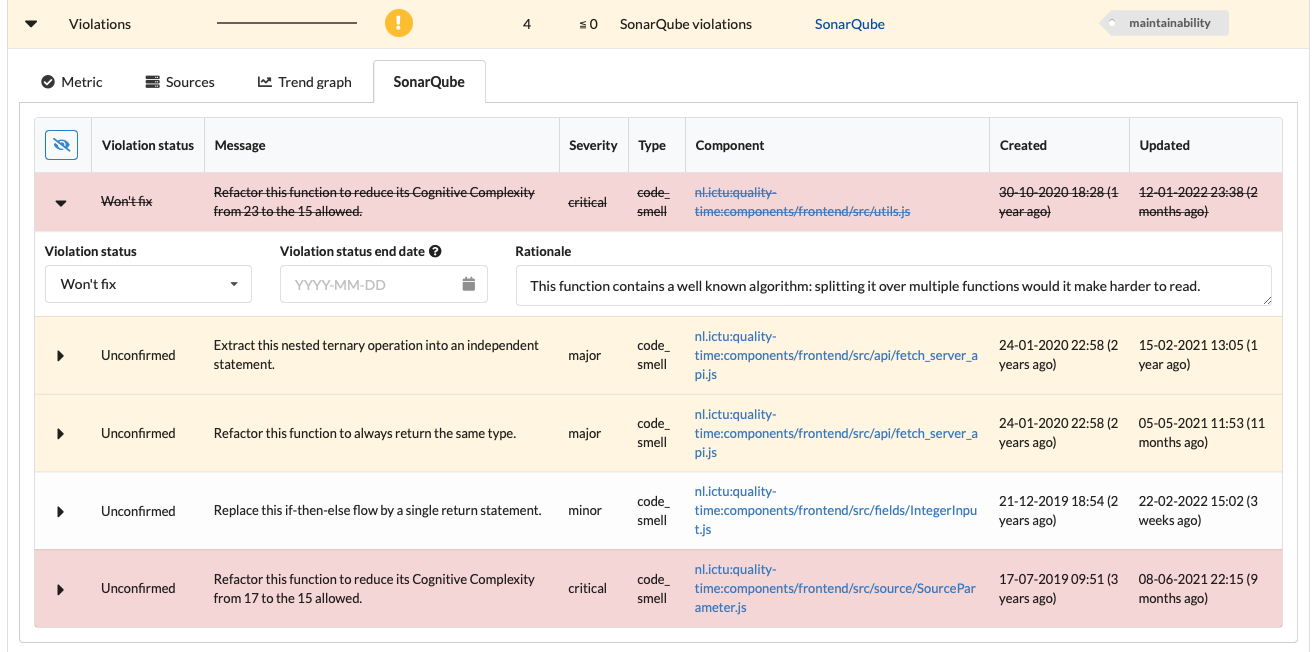
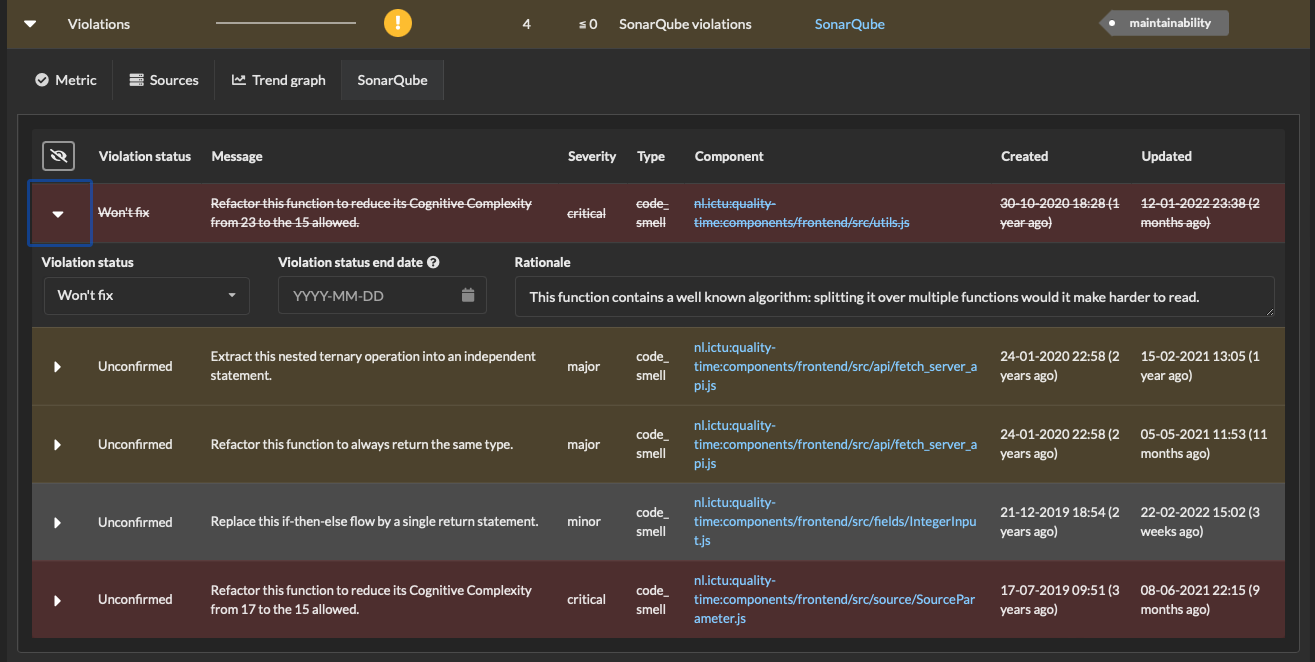
Features#
Implemented features include:
Robust data collection (the collector should never fail, even in the face of misconfigured or unavailable sources).
Measurement history is kept in a database, allowing for time travel.
Report configuration via the UI.
Multiple reports in one Quality-time instance.
LDAP-integration.
Generic false-positive management.
Metric tags can be used to summarize metrics with the same tag across subjects, e.g. to summarize all security metrics.
Export of reports to PDF, both via the UI as well as via the API.
Notifications of events, such as metrics turning red, to Microsoft Teams.
Side-by-side comparison of measurements at different points in time.
Integration with issue tracker (Jira only at the moment) to manage actions and technical debt.
Dark and light UI mode.
See also
For more plans, see the issue tracker.
Trying it out#
Quality-time requires Docker and Docker-compose.
Clone this repository:
git clone https://github.com/ICTU/quality-time.git
Build the containers:
docker-compose build
Start the containers:
docker-compose up
Quality-time is served at http://localhost. Use username jadoe and password secret to log in.
Why Quality-time?#
ICTU developed Quality-time to help projects and teams within ICTU gain actionable insight into the quality of the software they are developing and maintaining. The current vision on the scope of Quality-time is:
Quality-time collects data from sources that projects and teams are using anyway to develop and maintain software. Think version control systems, build tools, backlog management tools, test reports, security tools, and other quality tools. Quality-time does not analyse the software itself, but relies on information from these tools to create an integrated and actionable overview.
The sources that Quality-time uses to collect its measurement data are automated. Manual sources for measurements are possible, but automated sources are preferred.
Quality-time evaluates measurement data against target values. It shows users which metrics do not meet their target value, so users can take corrective action. Informational metrics, meaning metrics without target, are possible, but most metrics are assumed to have targets.
Quality-time provides a single overview of the software measurements, but refers users to the underlying tools for detailed information.
Technical debt management is an integral part of software quality management. Any metric that does not meet its target value for a longer period of time can be considered to represent a form of debt that needs to be managed.
Tools come and go. Hence, an important non-functional requirement for Quality-time is the ability to quickly add interfacing to new sources.
Quality-time provides actionable information on current quality issues and risks. Historical information is retained, but is a second-class citizen.
Quality-time is not an issue tracker or task manager. It does integrate with issue trackers, however, making it easy to create issues for metrics that need action and to manage technical debt.
Software quality is usually broken down into quality characteristics such as maintainability, testability, and accessibility, as for example in ISO 25010. Many metrics in Quality-time measure parts of these quality characteristics. For example, the number of ‘code smells’ and the ‘complexity’ of source code are both related to maintainability. However, Quality-time does not attempt to aggregate these metrics into a measurement of quality characteristics. Such aggregations typically lack a sound mathematical and scientific basis and are often not actionable.
Note
The name Quality-time is of course a call to action: spend more quality time with the software you develop 😁